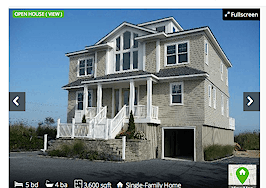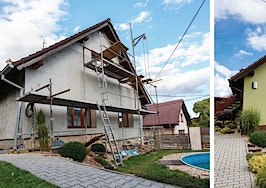Fundrise, the online crowdfunding platform that offers small investors an onramp to the real estate market, has introduced a product that it describes as “a means to combat the affordability crisis in America.”Through its new “eFund” offering, Fundrise aims to purchase undervalued houses in major metropolitan areas, rehabilitate them, and then resell them at prices that remain approachable for first-time home buyers, while still providing a solid return to the fund’s investors.
The company has shared a few photos and video of its first eFund acquision a trash-filled house in Los Angeles purchased for about $405,000, which Fundrise believes will take around one year and $143,000 to renovate. Inman News spoke with Fundrise VP of Investments Kendall Davis about the new investment strategy, and how it could help more millennials transition from renters to owners.
What’s the problem that you’re trying to solve with technology?
For a while there was this rap that millennials didn’t care about home ownership, but there have been studies that show around 75 to 80 percent of millennials believe that home ownership is important, and plan to own a home within the next couple of years. We have the largest generation in U.S. history that is reaching the home-buying age and discovering that there are not enough reasonably priced homes in the cities and neighborhoods where they want to live.
How does your product, eFund, increase affordability for first-time buyers?
We’re trying to tackle it basically one home at a time. We have a fund that is acquiring property for development in high-growth neighborhoods in major cities. We’re looking for affordable homes that we can purchase at some sort of a value or discount, and we’re typically rehabilitating those homes at a low cost.
Then we’re leveraging our national investor network to sell to interested home buyers. We have a huge network online, already built, of investors, and what we are now calling “home buyer investors.” We are trying to open up these homes to investors that might actually want to buy those homes, by lowering the costs using technology.
The real innovation behind this is we’re breaking down what the investment system has traditionally looked like: a bunch of disconnected individuals. You’ve got investors, which are going to be separate from end-buyers, which are separate from the brokers that are selling them homes, which are separate from the people that are developing those houses. If you’re investing in a REIT [Real Estate Investment Trust], you could be buying that through a broker, who’s taking a cut. You have this whole chain of people, and they’re all taking separate fees.
Who qualifies to invest in your network?
Anyone who lives in the U.S. and is over the age of 18 can place an investment on our website for a minimum of $500. We have no sort of requirements around accreditation. You don’t need to have a million dollars, by no means do you need to have $200,000 in income.
The fact that the individual investor who isn’t accredited, who is just an everyday investor, hasn’t had access to invest directly in their own communities, has also put them behind in terms of being able to afford a first home. So we’re trying to give people access to what has previously been a hard-to-access asset class, through this model.
I think we have close to 160,000 users on our platform right now. There’s a huge interest, and there’s a really valid reason for that: Real estate has been a proven way to earn solid returns over time.
What’s the story behind your first eFund offering in Los Angeles?
It was a hoarder’s house. People talk about curb appeal? This house did not have curb appeal, I’ll put it that way. But we saw a ton of potential in this home that was easily overlooked by others because there were great comps in the neighborhood. It’s a great street, a quiet block, and really accessible to downtown L.A.
We think that’s a huge selling point for the asset. Having that easy commute, especially in a place like L.A., is crucial. That kind of a price point is what we’re looking for, homes where we can buy it at cheap value, add a ton to that value, and sell it at a price that we feel is really do-able for someone who wants to live close by to work.
We’re working on it actively right now, and really excited to see the final product. I think we’re projecting around a 22 percent return. We’re planning to sell at around the $750,000-800,000 price point. There are around 6,700 investors in the eFund, who will have a first look and opportunity to purchase the home at a discount.
We have a D.C.-focused eFund as well, and we are planning to launch a national eFund shortly.
How big could this go? How many homes do you think you could have in some stage of the process at any one time?
We can raise up to $50 million per fund, per year. Because of the price point at which we’re purchasing these homes, let’s say we’re putting $600,000 into each of these homes, so you can do the math on that. We have the two eFunds now, a third in the pipeline, and plan to continue to expand. It will likely be rolling capital events that will occur at the sale of each home.
We have some rentals in the mix, and some income is generated from those as well. You’re getting the benefit of both a fix-and-flip strategy and a rental strategy, which are time-intensive and capital-intensive to manage on your own. It’s a nice, diversified strategy.
What could go wrong?
We’re always thinking about that. Rentals tend to do very well at a time when a fix-and-flip strategy might not. So, for example, if something happened in the housing market, a 2007-2008 level event, people still need somewhere to live. We’re trying to consider multiple scenarios, and that’s why we like people to consider being diversified across markets: investing in both our D.C. and our L.A. eFunds, investing in our REITs that are also nationally diversified; and potentially, when we launch our new funds, diversifying into those as well. Diversification is a good risk mitigator.
Email Inman





